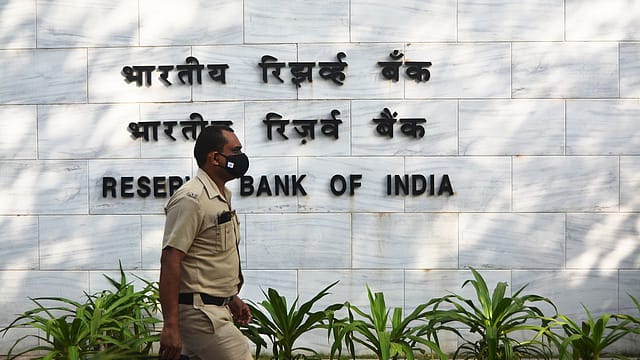RBI faces a disinflation dilemma: Why did the MPC decide on keeping rates intact despite CPI crashing to 2.1%?
ADVERTISEMENT

In India, headline inflation has fallen to its lowest level in over six years. Despite this, the Reserve Bank of India (RBI), in its Monetary Policy Committee (MPC) decision Wednesday, decided to keep interest rates unchanged.
The MPC, which concluded its latest meeting on August 6, unanimously agreed to keep the policy repo rate at 5.5%, despite the sharp decline in consumer price inflation (CPI) to 2.1% in June.
In its Monetary Policy Statement, RBI stated: "CPI headline inflation declined for the eighth consecutive month to a 77-month low of 2.1% (y-o-y) in June 2025. This was driven primarily by a sharp decline in food inflation led by improved agricultural activity and various supply-side measures. Food inflation recorded its first negative print since February 2019 at (-) 0.2 % in June. High-frequency price indicators signal a continuation of the lower price momentum in food prices this year to July as well."
This indicates that vegetables and other perishables were mainly responsible for the decline. However, the statement also noted that core inflation, which stayed within a narrow range of 4.1-4.2% during February-May, rose to 4.4% in June, partly due to a continued increase in gold prices.
In simple terms, the MPC clarified that this disinflation is not a sufficient reason to cut rates further — at least not yet. Core inflation, which excludes the price of food and fuel, is quietly rising. It reached 4.4% in June, up from a narrow band of 4.1–4.2% seen earlier in the year. Much of this increase is attributed to rising gold prices and strong domestic demand, mentioned above.
December 2025
The annual Fortune 500 India list, the definitive compendium of corporate performance, is out. This year, the cumulative revenue of the Fortune 500 India companies has breached $2 trillion for the first time. Plus, find out which are the Best B-schools in India.
Ranen Banerjee, partner and economic advisory leader, PwC India, is of the opinion that the MPC was right in hitting the pause button. "While the headline CPI inflation has decreased to the lower range of the target band, core inflation remains around the midpoint of the range and is trending mildly upward. The growth forecast has been retained at 6.5%, which may come under some mild pressure but is unlikely to deviate significantly, with a 10–20 bps downside risk. Any downsides on the external front are likely to be cushioned from the domestic demand uplift possibilities, with the benign inflation and trickle-down of the income tax rate cuts at the lower end of income brackets, where the marginal propensity to consume is likely to be higher."
While headline inflation is well below target, underlying price pressures appear to be building up. Furthermore, global risks persist. “The pace of disinflation is slowing down,” the RBI said, pointing to ongoing trade tensions and tariff announcements that could push global prices up again.
Sandeep Bagla, CEO, TRUST Mutual Fund, said, "RBI/MPC has seen through the optically lower inflation readings and based its monetary rate setting decision on longer-term inflation expectations. While the headline CPI is expected to remain in a 1-2% range over the next few months, core inflation remains elevated, and inflation for the next year is projected at 4.9%. It is important from a macroeconomic stability perspective that we have a stable policy based on true economic realities. The message is that the economy should not expect too much incremental support from monetary policy measures as of now."
Additionally, Madhavi Arora, Chief Economist, Emkay Global Financial Service, said, “Despite sharply lowering its inflation forecast to 3.1% from 3.7% earlier, RBI’s decision to keep rates steady emanates from their focus on one-year-ahead expected inflation that’s looking comfortably above 4%, while growth in their view has held up well, despite global uncertainty.”
"However, focusing on one-year-ahead expected inflation appears increasingly misplaced in an evolving world – particularly as the global landscape continues to shift toward a disinflationary bias in Asia. We think going ahead, downside risks to growth would be increasingly evident with new global resets and could still open up space for easing in the remainder of the year, even though the Governor seems to have raised the bar higher for further easing,” noted Arora.
Another reason for the RBI’s cautious stance is timing. The central bank has already reduced repo rates by 100 basis points since February, and those reductions are still rippling through the financial system. "On balance, therefore, the current macroeconomic conditions, outlook and uncertainties call for continuation of the policy repo rate of 5.5% and wait for further transmission of the front-loaded rate cuts to the credit markets and the broader economy," per RBI's MPC statement.
In short, the RBI is opting to wait and watch. Although inflation appears subdued at present, the RBI anticipates it will rise above 4% again by the end of the current financial year. So by maintaining rates at current levels, the central bank signals that it is not merely responding to short-term data, but it is preparing for what might lie in the future.
Yashish Dahiya, Chairman & Co-Founder, PB Fintech, said, “As regulators worldwide grapple with the scale of emerging geopolitical headwinds and heightened trade risks, the RBI’s prudent 'wait‑and‑watch' stance stands out as both timely and strategic, particularly after the significant rate cut implemented in the prior policy meeting."
